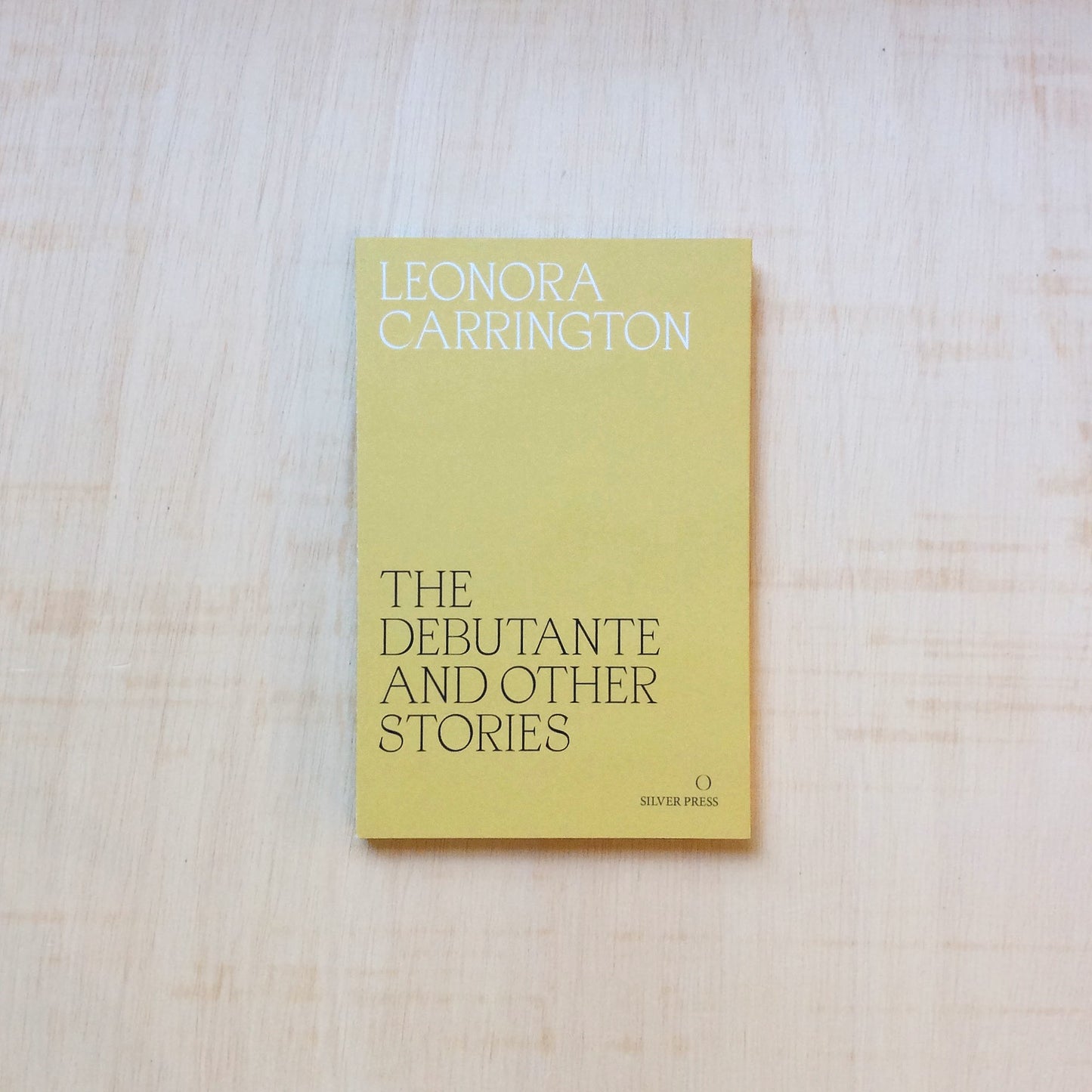The Debutante And Other Stories
The Debutante And Other Stories
Leonora Carrington
Silver Press
2017
9780995716209Softcover
20 x 13 x 1.2 cm
168 pages
Verfügbarkeit für Abholungen konnte nicht geladen werden
Leonora Carrington (1917–2011) was born in Clayton-le-Woods, Lancashire, the second of four children. Her mother, Marie Humphreys, née Moorhead, a great beauty, was Irish by birth; her father, Harold Carrington, had made a fortune in artificial textiles. Carrington was brought up at Crookhey Hall, a turreted grey stone mansion, in her mother’s Catholic faith, and sent away to convent schools, from which she was twice expelled. After being ‘finished’ in Florence, she acceded to her parents’ wish that she become a debutante in the 1936 season. A ball was held at the Ritz in her honour and she learned, to her outrage, that women weren’t allowed to place their own bets at Ascot. (She read Eyeless in Gaza there instead.) Carrington studied painting in London, against her father’s initial objections: first at Chelsea School of Art and then at the Amédée Ozenfant school, where she began to develop her exacting style. At a dinner party given by fellow student Ursula Goldfinger in 1937, she met the artist Max Ernst, with whom she went to live in Paris, though as she later put it: ‘I ran away to Paris. Not with Max. Alone.’ In Paris, Carrington began writing stories, in French, and publishing them privately, illustrated with her own drawings or etchings by Ernst. It was there that she completed her major self-portrait, Inn of the Dawn Horse (1937). Meeting the surrealists emboldened Carrington: Buñuel remembered her leaving a conversation midway through to take a shower fully clothed, and then coming back to continue it dripping wet. There are stories of naked dinner parties, of Carrington spreading mustard on her feet and serving guests omelettes made with their own hair.
The couple moved to the village of St-Martin-d'Ardèche in 1938, in part to avoid Ernst’s wife, Marie-Berthe. When war broke out, Ernst was arrested and interned as an enemy alien. Carrington, aged 22, suffered a breakdown and – after fleeing to Spain – was held in an asylum in Madrid, where she was given the drug Cardiazol, which induced fits. She described the experience in her memoir, Down Below (1944). Released into the care of her nanny, Carrington – who had no intention of returning to England – escaped from her in Lisbon and took refuge in the Mexican Embassy. A marriage of convenience to the Mexican diplomat and poet Renato Leduc, a friend of Picasso, allowed her to travel on to New York, and then to Mexico City, where she arrived in 1943.
In Mexico, Carrington joined an artistic circle which included Octavio Paz, Diego Rivera and Frida Kahlo as well as Remedios Varo, a fellow émigré, who became her closest friend and collaborator. She married the Hungarian photographer Imre (Chiki) Weisz in 1946. Their first son, Gabriel, was born in 1947, followed soon after by Pablo. Her short stories, many autobiographical, were published in several collections. Like her paintings they contain references to strange creatures, alchemical rituals and human folly. She also wrote several plays.
Politically active in the causes of human rights and women's rights, Carrington left Mexico for a year in 1968 in protest at the Tlatelolco massacre, where the military police shot hundreds of demonstrating students. In 1973, she designed a poster for the Mexican women’s liberation movement, of which she was a co-founder. Her best-known written work, the novel The Hearing Trumpet, was published in 1974. She died on 25 May 2011 in Mexico City and is buried in the British cemetery there.

